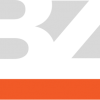You cannot run a successful business without mastering the skill of accurate sales forecasting.
Most businesses, however, just guess at this information. Ask about the forecasting of future sales, and they’ll laugh at you. Getting anything reliable out of the sales side of the business is like getting pigs to fly.
I would agree with you, except. Except for the success I’ve had with my clients in this exact area.
I work with companies both large and small who can predict within 5-10% the revenue they’ll receive in the next 90 days. This information allows them to respond to changes in the marketplace before they happen and out-maneuver the competition.
Would you like to have this kind of business intelligence? Follow these four proven steps and you’ll be able to drive through windshield of your car and not just the rear view mirror.
Sales Forecasting Step 1: Determine realistic close dates
Accurate sales forecasting begins with effective dating of each sale. Every salesperson in your company, including you if you sell for your firm, should be held accountable for setting realistic close dates for deals in the pipeline.
Note how I said realistic close dates, not hoped-for close dates.
Getting dates like these will require open, honest conversations with clients and prospects and will flush out deals that will never really close in the foreseeable future. That’s okay. Better to have fewer, well-qualified leads in your sales forecast than a pipeline full of fluff.
Sales Forecasting Step 2: Utilize fixed percentage scoring
The next key to accurate sales forecasting is setting a percentage score, or probability, for each deal. Not a random probability assignment based on how a person “feels” about a deal, but a percentage score based solely on actions taken by a client or prospect in moving through the sales cycle.
This is called fixed percentage scoring and it’s critical to accurate sales forecasting. It’s fixed because no one–including you–is allowed to override the score based on how they feel about the deal.
For instance, if a prospect has agreed to a first appointment and one out of ten people who complete a first appointment with your company ends up buying, the fixed percentage score is 10%, no matter how “hot” the prospect seems to be. If they complete a needs analysis and agree to a second appointment, their score increases to 25%. And so forth.
Again, the percentage score is not based on how anyone feels about the deal, but on the specific actions taken by the prospect in advancing through the sales cycle.
Sales Forecasting Step 3: Set the proposed dollar size
The final step in achieving accurate sales forecasting is factoring in the actual dollars being discussed. Depending on your sales cycle and the products and services you provide, the time at which you do this may vary, but the theme of clarity, openness, and honesty still prevails.
Before anyone calls on a single prospect in your company, a basic knowledge of what that company can afford should be clearly understood. As a trusting relationship is built with a prospect, their business needs and the return on investment from meeting those needs should be openly discussed, with proposals being generated from these figures.
This, again, will require honest conversations with clients and prospects and may initially result in deleting deals in the the pipeline that never should have been part of a sales forecast in the first place.
Sales Forecasting Step 4: Put It All Together
Take the dollar amount of each deal, multiply that amount by its percentage score, and place that number in a 30, 60, 90 day (or more) column based on its estimated close date.
For example:
- A $50,000 deal
- With a 25% fixed percentage score
- Projected to close in in two months
- Results in a $12,500 sales forecast for this deal in 60 days
Now add your columns up, and this is your total sales forecast. And the best part? You don’t need expensive software to do it. A simple spreadsheet works perfectly well.
The first time I do this with my clients, they are shocked with how small the numbers are. That happens because most of what passes for a sales forecast are vague wishes and vain hopes. But I’ve learned to trust these numbers over time and not anyone’s “happy ears.”
Real numbers vigorously pursued act like truth serum and will provide your business with the vital information it needs to thrive.

